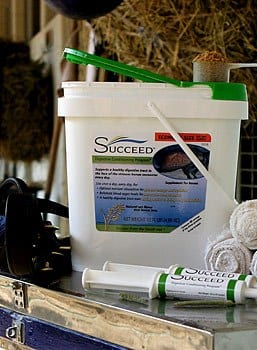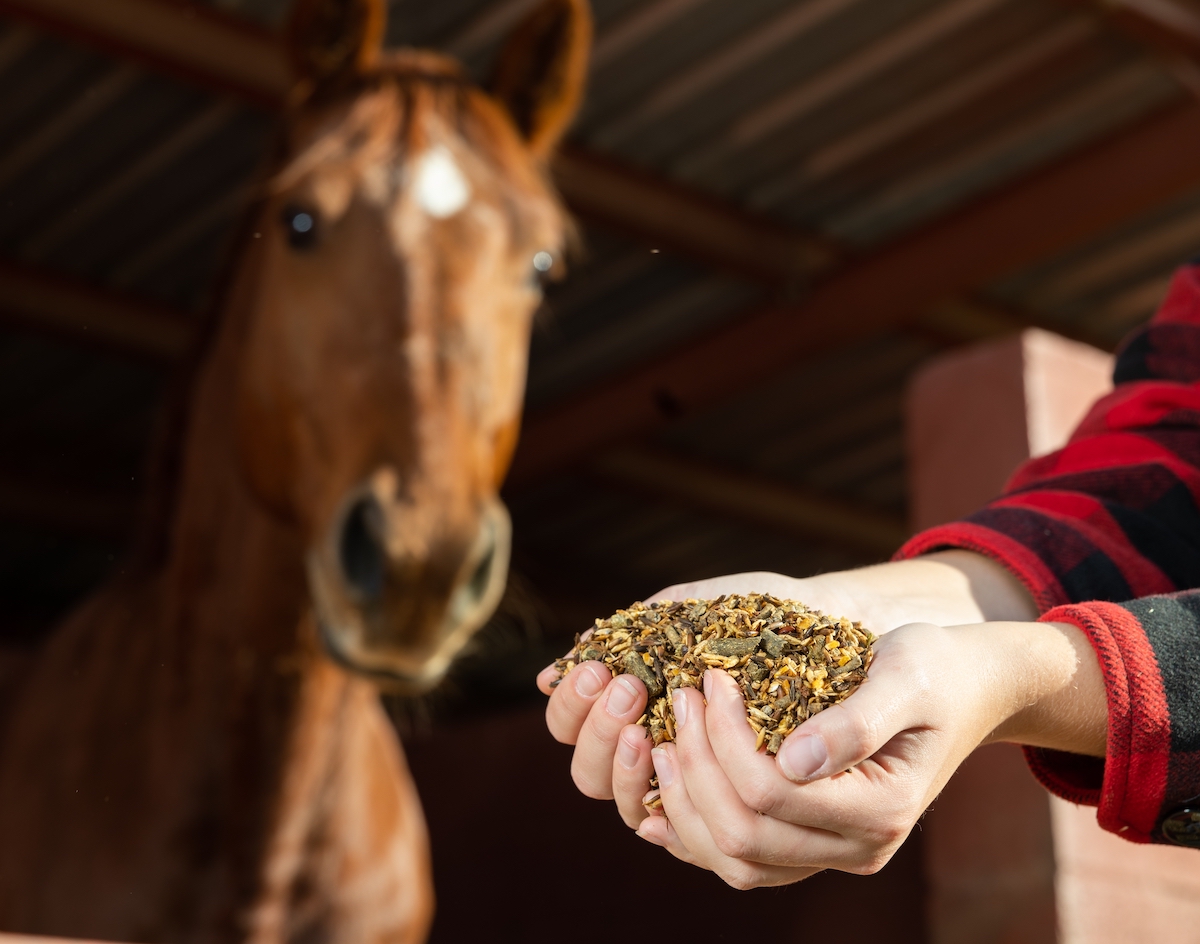With just a box label to go on, it can be very difficult to understand what’s really in your horse’s supplements and why it makes a difference. In this series on What Goes In SUCCEED®, we start by explaining how equine supplements are regulated, and the affect on labeling and claims. Subscribe to the blog for parts 2-5 on the benefits of what’s really in the oat flour, oat oil, and irradiated dried yeast on our label – and the synergy of these ingredients in SUCCEED®. 
As a responsible horse person, you want to know what you are putting in your horse and what benefit it is supposed to have. But supplement labels can be confusing, or even misleading – which is of no help when you need to sort through the snake oil to find the ones that really do work.
The first step in researching what you put into your horse is understanding how the equine supplement industry is regulated at a state and national level.
Here’s some insight into how regulations affect what you read on the outside of your horse’s supplement box.
Equine Supplements Classified as Either Feed or Drug Products
When it comes to the products we humans put into our bodies there are three possible classifications defined by the U.S. Food and Drug Administration: drugs, food, and dietary supplements. But for animals there are only two: feed and drugs.
If a product doesn’t adhere to the guidelines established for animal feed products, it is automatically classified as a drug and falls under the regulation of the
Center for Veterinary Medicine, the branch of the FDA responsible for animals.
The problem is that many equine supplements aren’t really feed or drugs, but they have to be classified and regulated as one or the other in order to be licensed for sale in the US.
Feed Products Regulated at the State Level
Equine supplement manufacturers typically seek to have products classified and sold as animal feed in the US. As such, they must be licensed for sale in each individual state.
All 50 US states have a Feed Control Official in their Departments of Agriculture who reviews product ingredients, labels, claims, and guaranteed analyses, and approves (or disapproves) them for sale in his or her state. It is a time consuming and difficult process for a supplement to get licensed for sale throughout the country.
AAFCO Guides State Feed Control Officials
The Association of American Feed Control Officials is a national organization that provides guidelines to the state Feed Control Officials to assist them in their decision-making, and to help ensure uniformity in the laws, regulations, standards and policies across the states. While AAFCO has no regulatory power, it does have significant influence on the officials who do.
In particular, AAFCO has created specific guidelines for what ingredients may be used in animal feed products, the terminology used to describe those ingredients, and the claims made on the label about the ingredients.
Therein lies the difficulty for supplement manufacturers – and the responsible horse owner. The ingredients on our supplement labels can only be described with a select list of terms which have been approved for use in feeds.
How Your Supplement Labels Are Affected
As a result of this process, it is possible that the exact ingredients that make a good supplement beneficial cannot be described or referenced explicitly on its label. Instead, the ingredients are described by a general “class” of ingredients approved by AAFCO.
For example, the unique benefits of SUCCEED come from components of our ingredients that do not appear on the label, including polar lipids, beta glucan, and mannan oligosaccharides (MOS). They don’t appear on our label because none of these are approved feed ingredients or feed terms under AAFCO guidelines. Instead, we have to list only the
main classes of ingredients from which they are derived, namely oat flour, oat oil, and irradiated dried yeast.
The problem for us is that we can’t accurately describe the benefits of our product on the label. The problem for you is that you don’t get a clear picture of what’s really doing the beneficial work in your horse’s supplement.
Read Between the Lines of Your Equine Supplement Label
Subscribe to the SUCCEED® blog to so you don’t miss parts 2-5 as we discuss
what’s really behind the oat flour,
oat oil, and
irradiated dried yeast in our product (hint: it’s the polar lipids, beta glucan, MOS, and nucleotides) – and why the benefits are unique to SUCCEED
®.
 As a responsible horse person, you want to know what you are putting in your horse and what benefit it is supposed to have. But supplement labels can be confusing, or even misleading – which is of no help when you need to sort through the snake oil to find the ones that really do work.
The first step in researching what you put into your horse is understanding how the equine supplement industry is regulated at a state and national level. Here’s some insight into how regulations affect what you read on the outside of your horse’s supplement box.
As a responsible horse person, you want to know what you are putting in your horse and what benefit it is supposed to have. But supplement labels can be confusing, or even misleading – which is of no help when you need to sort through the snake oil to find the ones that really do work.
The first step in researching what you put into your horse is understanding how the equine supplement industry is regulated at a state and national level. Here’s some insight into how regulations affect what you read on the outside of your horse’s supplement box.
 As a responsible horse person, you want to know what you are putting in your horse and what benefit it is supposed to have. But supplement labels can be confusing, or even misleading – which is of no help when you need to sort through the snake oil to find the ones that really do work.
The first step in researching what you put into your horse is understanding how the equine supplement industry is regulated at a state and national level. Here’s some insight into how regulations affect what you read on the outside of your horse’s supplement box.
As a responsible horse person, you want to know what you are putting in your horse and what benefit it is supposed to have. But supplement labels can be confusing, or even misleading – which is of no help when you need to sort through the snake oil to find the ones that really do work.
The first step in researching what you put into your horse is understanding how the equine supplement industry is regulated at a state and national level. Here’s some insight into how regulations affect what you read on the outside of your horse’s supplement box.



